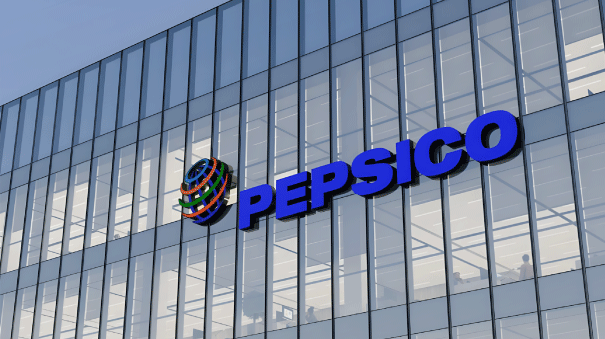GST Big-picture changes, leadership mindset, governance framework
The Goods and Services Tax (GST) landscape in India is transforming from a compliance-first framework to a digitized, analytics-driven regime that demands strategic stewardship. In this new world, CFOs aren’t just guardians of tax compliance—they are leading enterprise-wide reforms in tax strategy and cash flow optimization, ensuring digital transformation is integrated into the organization’s DNA.
This article give finance leaders — especially Group CFOs, VPs Finance, and Controllers — a strategic lens to own, evolve, and capitalize on the GST revamp.
1️⃣ GST as a Boardroom Priority
When GST was introduced in 2017, the primary concern for most organizations was compliance—registration, return filing, and avoiding penalties. But in the 8 years of GST implementation, it has evolved into a multi-dimensional, tech-driven framework with significant implications for working capital, procurement strategy, vendor management, litigation, and board-level decision-making.
With the rollout of GST 2.0, tighter input credit norms, AI-based scrutiny, and real-time reconciliation tools, the expectations from finance leadership have further changed significantly.
For CFOs, it’s no longer about ensuring the return was filed on time. It’s about enabling the business to be faster, more resilient, and more tax-optimized — and about preparing the enterprise for what lies ahead in India’s tax future.
2️⃣ The GST Revamp Landscape: What’s Changing in 2025 and Beyond
The GST regime is being re-engineered across four strategic dimensions:
1. Compliance Simplification
- New GSTR formats (revamp of GSTR 3B, auto-populated 2B) are replacing manual reconciliations.
- Unified return workflows are pushing automation to the front line.
2. Input Tax Credit (ITC) Tightening
- Introduction of Rule 37A (reversal of ITC if vendor doesn’t file returns).
- DRC-01C and Rule 88C notices are now AI-triggered, increasing risk.
3. Mandatory E-Invoicing & E-Way Bill Expansion
- Thresholds have dropped to ₹5 crore, with more businesses brought under e-invoicing.
- Integration with FASTag/RFID for logistics movement tracking.
4. Data Intelligence by Tax Authorities
- GSTN is now backed by machine learning models to flag mismatches in 2A/3B, circular trading, and non-filers.
- Real-time anomaly detection is increasing scrutiny frequency.
Real-World CFO Move
Sector: Auto Components | Location: Maharashtra
Trigger: GST Rule 88C notice for ITC mismatch
The Challenge: Blocked ITC worth ₹1.2 Cr due to repeated vendor non-filing. Compliance notices were piling up.
CFO’s Strategic Action Plan:
- Implemented vendor compliance tracking dashboards
- Mapped vendor ratings into procurement decision workflow
- Maintained a full audit trail and communication logs
Results Over 3 Quarters:
- ITC mismatch dropped by 68%
- ₹2.4 Cr in blocked credit recovered
- Working capital cycle reduced by 11 days
- Procurement compliance score improved by 22%
Takeaway for CFOs: “ITC loss isn’t just a tax problem. It’s a supply chain risk. CFOs must bring vendor GST discipline into procurement policy.”
3️⃣ The Strategic CFO: From Tax Gatekeeper to Value Creator
The modern CFO must lead GST from four strategic fronts:
A. Proactive Planning: From Tax Costs to Tax Strategy
- Design procurement flows to optimize ITC timelines.
- Align supply chain restructuring with place-of-supply rules and cross-state ITC benefits.
- Forecast credit availability and offset timelines to match working capital cycles.
B. Decision Support: Linking Tax to Growth
- Price products with GST implications in mind, especially under “bill to, ship to” models.
- Use GST analytics to influence market expansion and export decisions.
C. Legal & Risk Preparedness
- Maintain audit logs, issue advance ruling memos, and prepare litigation SOPs.
- Treat free samples and canteen services with clarity to avoid reversed credits.
D. Technology Enabler
- Lead automation adoption across GSTR-2B reconciliation, ITC ledger tracking, and ERP-GST linkage.
- Use dashboards to predict tax risks before they happen.
4️⃣ Free Supplies, Employee Benefits, and Non-Recoverable Credits — The CFO Blind Spot
The CFO’s tax strategy must now include areas that were historically viewed as “legal grey zones” or “cost centers.”
Free Samples and Promotional Goods
- As per GST law, free goods without consideration attract GST.
- Credit on inputs/services for such free supplies often needs reversal (except under specific schemes like combo packs).
- Solution: Build “cost of free sample” GST planning into brand marketing budgets.
Employee Health Insurance
- Common CFO query: “Can we claim GST input on group medical policy for employees?”
- Current legal position: Only when mandatory under labor law, not voluntary.
- Impact: This results in non-creditable GST becoming a cost. CFOs should model the true benefit-cost ratio.
Industrial Canteen Services
- Ambiguity continues over whether ITC is claimable on canteen expenses.
- Rule of thumb: If not obligatory under Factories Act, ITC may not be allowed.
- CFOs should assess if canteen vendors can structure supplies to be compliant for ITC.
“In Part 2, we’ll shift from strategic imperatives to sector-specific playbooks, compliance nuances, and practical tools for CFOs to lead GST transformation.
Part 2: The Tactical GST CFO Handbook
📞 Book a strategy demo with our team marcom@wepsol.com
🌐 Checkout more details on floTax here at https://wepsol.com/solutions/flotax/

